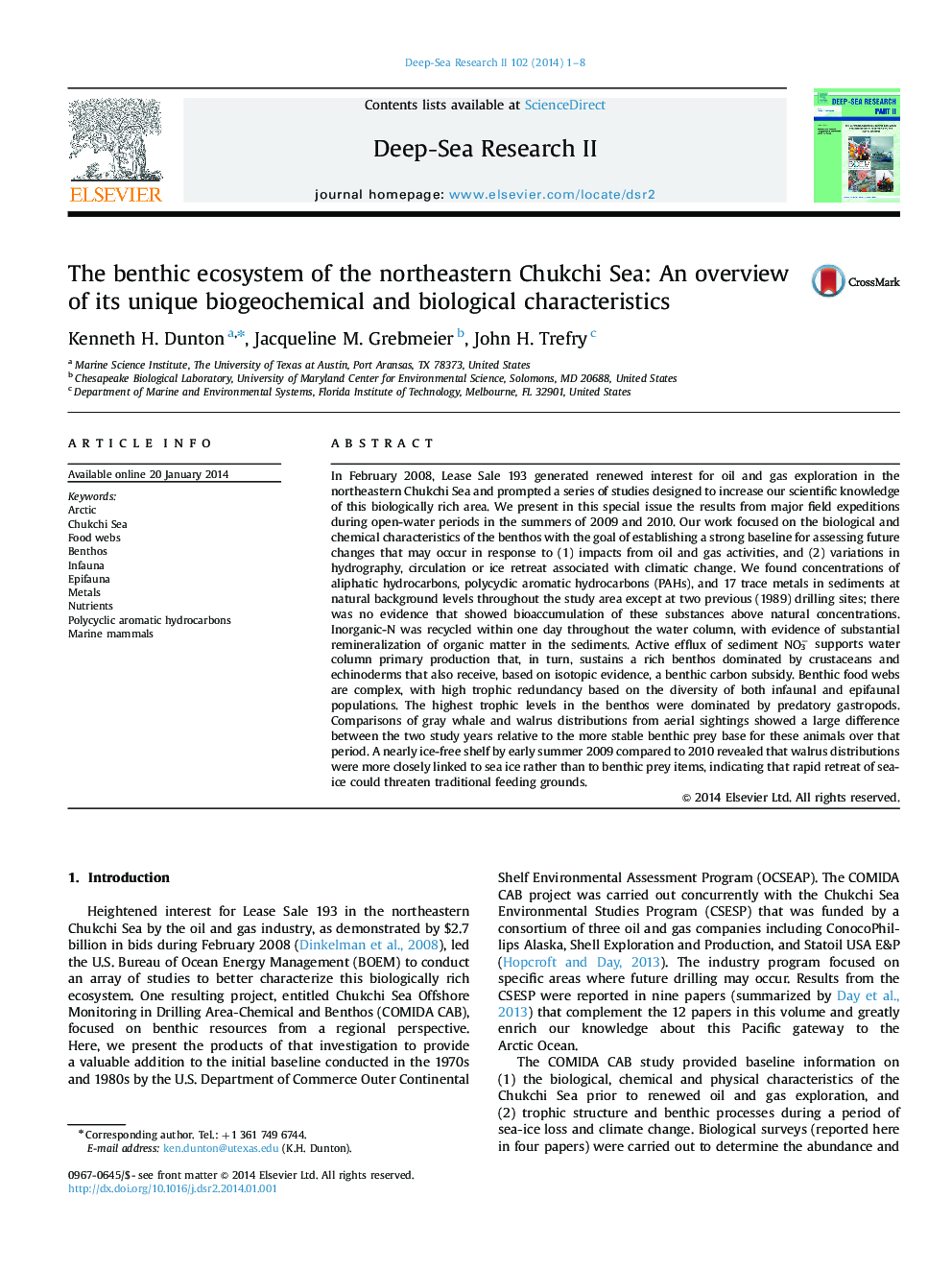| کد مقاله | کد نشریه | سال انتشار | مقاله انگلیسی | نسخه تمام متن |
|---|---|---|---|---|
| 4536408 | 1626438 | 2014 | 8 صفحه PDF | دانلود رایگان |
In February 2008, Lease Sale 193 generated renewed interest for oil and gas exploration in the northeastern Chukchi Sea and prompted a series of studies designed to increase our scientific knowledge of this biologically rich area. We present in this special issue the results from major field expeditions during open-water periods in the summers of 2009 and 2010. Our work focused on the biological and chemical characteristics of the benthos with the goal of establishing a strong baseline for assessing future changes that may occur in response to (1) impacts from oil and gas activities, and (2) variations in hydrography, circulation or ice retreat associated with climatic change. We found concentrations of aliphatic hydrocarbons, polycyclic aromatic hydrocarbons (PAHs), and 17 trace metals in sediments at natural background levels throughout the study area except at two previous (1989) drilling sites; there was no evidence that showed bioaccumulation of these substances above natural concentrations. Inorganic-N was recycled within one day throughout the water column, with evidence of substantial remineralization of organic matter in the sediments. Active efflux of sediment NO3− supports water column primary production that, in turn, sustains a rich benthos dominated by crustaceans and echinoderms that also receive, based on isotopic evidence, a benthic carbon subsidy. Benthic food webs are complex, with high trophic redundancy based on the diversity of both infaunal and epifaunal populations. The highest trophic levels in the benthos were dominated by predatory gastropods. Comparisons of gray whale and walrus distributions from aerial sightings showed a large difference between the two study years relative to the more stable benthic prey base for these animals over that period. A nearly ice-free shelf by early summer 2009 compared to 2010 revealed that walrus distributions were more closely linked to sea ice rather than to benthic prey items, indicating that rapid retreat of sea-ice could threaten traditional feeding grounds.
Journal: Deep Sea Research Part II: Topical Studies in Oceanography - Volume 102, April 2014, Pages 1–8
